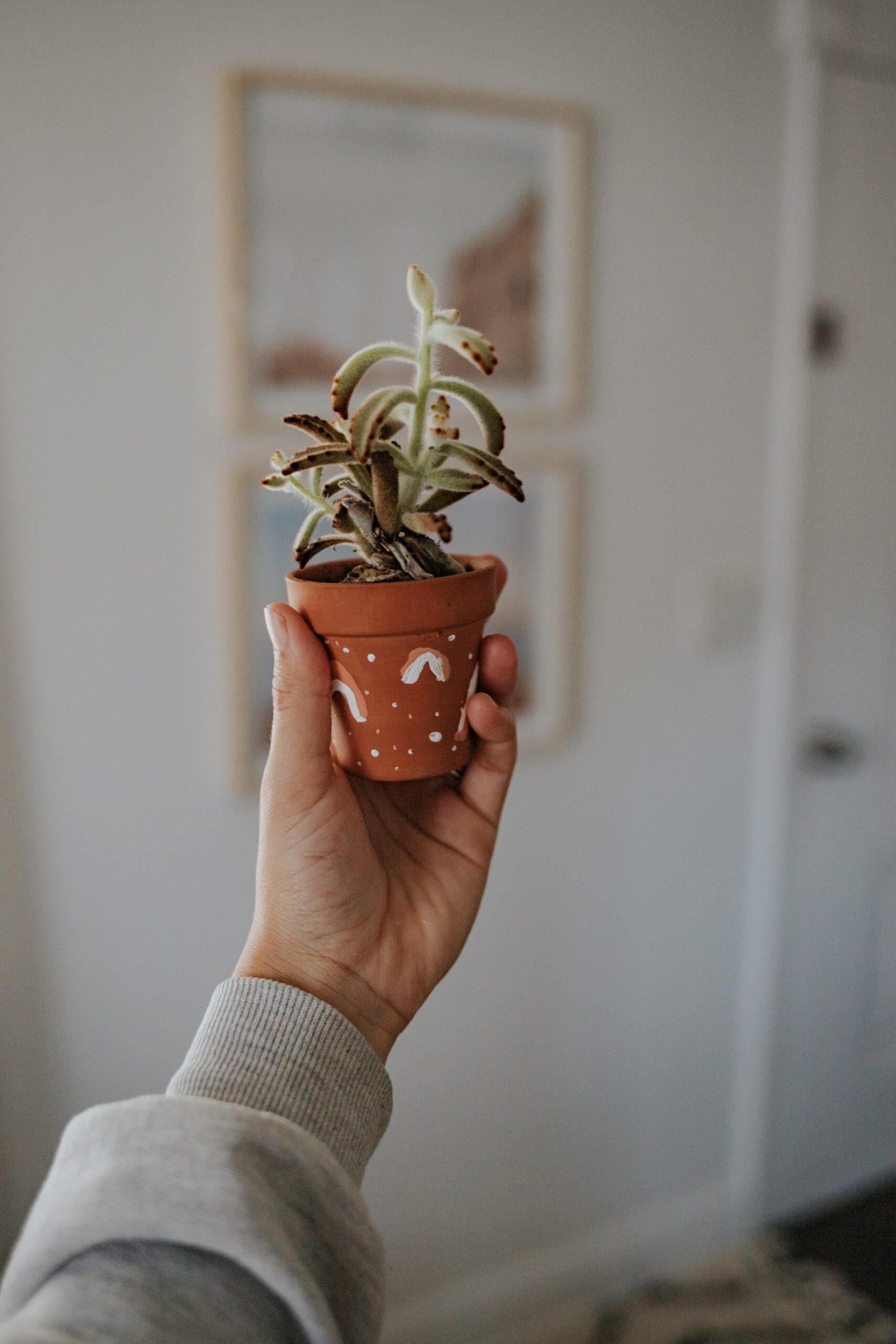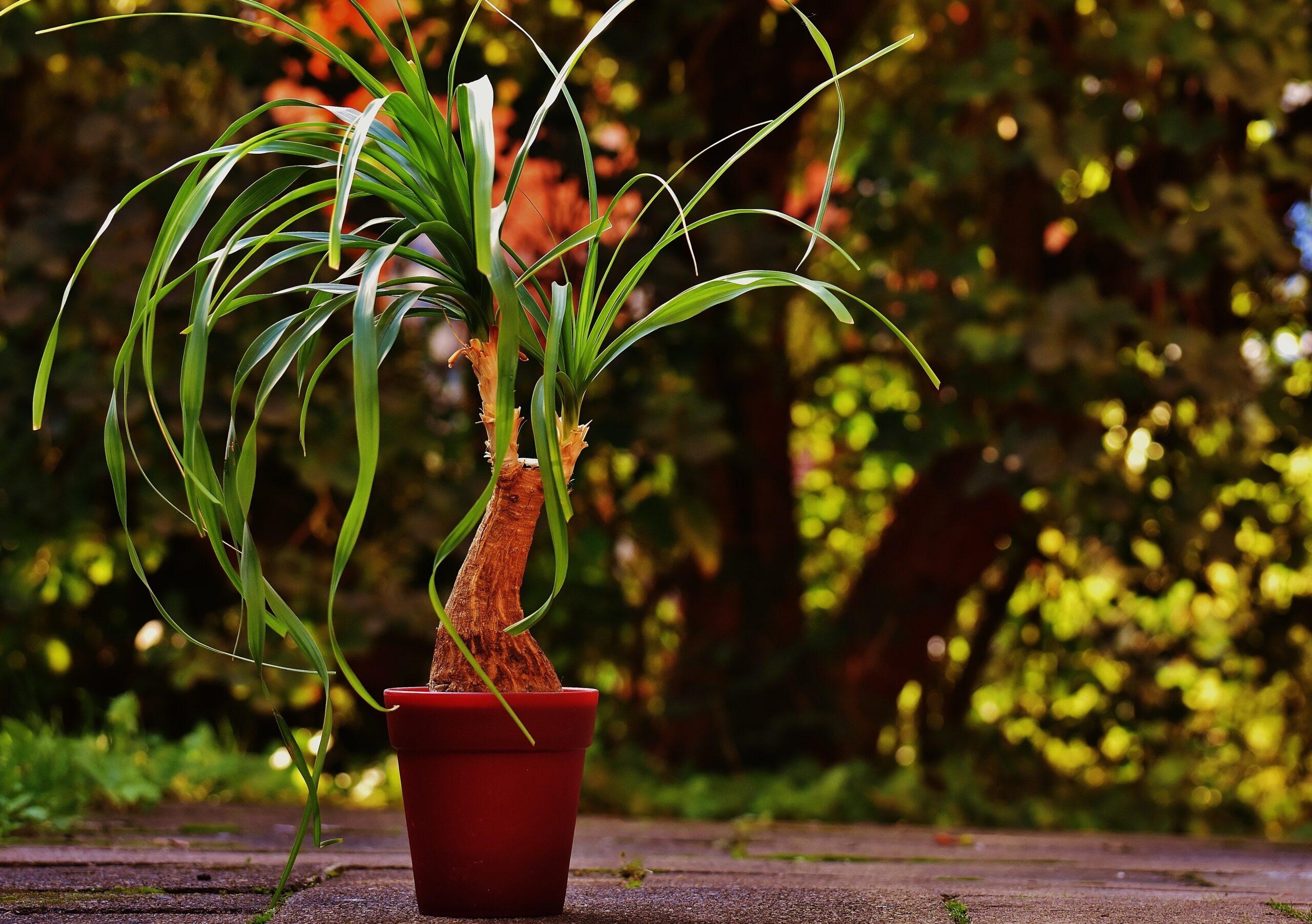All About the Plant Name
Latin Name Goes Here
Brief descriptive paragraph goes here
Other common names:
What makes a Plant Name a good houseplant?
The Ponytail Palm (Beaucarnea recurvata) is not actually a true palm but belongs to the Asparagaceae family and hails from eastern Mexico. One of its standout features is its hardiness and low-maintenance nature. Its bulbous base, often referred to as a caudex, serves as a water reservoir, allowing the plant to endure extended periods without watering. This makes it an excellent choice for those who occasionally forget to water their plants. In addition to its durability, its unique aesthetic is undeniably captivating. From its swollen base emerges a slender trunk that gives rise to long, flowing, hair-like leaves, reminiscent of a ponytail. Beyond its aesthetic appeal, the Ponytail Palm offers functional benefits, such as purifying the indoor air by filtering certain pollutants and emitting fresh oxygen. Moreover, for households with pets, it’s comforting to note that this plant is generally considered pet-safe.
How do I take care of my new Plant Name?
Light: Ponytail Palms need lots of light, ideally near a south or east-facing window. Direct sunlight is fine.
Watering: They are drought-tolerant and store water in their bulbous trunk, so they don’t require frequent watering. Water thoroughly and let the top 1-2 inches of soil dry out between watering. Overwatering can lead to root rot.
Temperature: They prefer warmer temperatures between 60 and 85 degrees Fahrenheit (15-29°C), and don’t do well in cold drafts.
Humidity: Ponytail Palms can tolerate low humidity, which makes them great indoor plants.
Soil Mix and Repotting: Use a well-draining soil mix. A cactus or succulent mix is a good option.
Fertilization: They don’t require much feeding. Fertilize sparingly, about 2-3 times during the growing season (spring and summer) with a balanced houseplant fertilizer.
Pet Friendliness: They don’t require much feeding. Fertilize sparingly, about 2-3 times during the growing season (spring and summer) with a balanced houseplant fertilizer.
Additional Note: Remember, this plant is very resilient and requires minimal care, making it perfect for beginners or those with a busy lifestyle.
What are some interesting facts about Plant Name?
Not a “true palm”: Despite its common name, the Ponytail Palm isn’t a true palm. It’s actually a member of the Asparagaceae family, which also includes the Agave.
They’re their own “canteen”: The bulbous, swollen base of the Ponytail Palm, known as a caudex, acts as a reservoir for storing water. This adaptation makes the plant incredibly drought-tolerant and suited for arid conditions.
Long lifespan: Ponytail Palms are known to live for several decades, and with good care, they can be a long-lived companion. Some specimens are known to be over 350 years old!
Slower grower, but still a “show-er”: These plants grow slowly. While they can eventually reach 20 feet tall in their natural habitat, indoor Ponytail Palms usually grow to about 3-6 feet tall over many years. Their unique beauty makes it a go-to for houseplant lovers of all skill levels.
Requires minimal care: The Ponytail Palm’s low maintenance requirements and hardiness make it a popular plant for beginner gardeners, busy individuals, or those who travel often.
Unique look that makes it stand out from the crowd: With its thick, bottle-shaped trunk and a canopy of long, thin leaves that cascade down like a ponytail, this plant has a distinctive, attractive appearance.
Wonderful air purification qualities: Like many houseplants, Ponytail Palms can help to improve indoor air quality by absorbing toxins and emitting oxygen.
Surprising native habitat: Ponytail Palms are native to the semi-desert areas of Southeast Mexico, where they grow in rocky, limestone terrain.
What are some common problems and solutions for Plant Name?
The Ponytail Palm (Beaucarnea recurvata) is not actually a true palm but belongs to the Asparagaceae family and hails from eastern Mexico. One of its standout features is its hardiness and low-maintenance nature. Its bulbous base, often referred to as a caudex, serves as a water reservoir, allowing the plant to endure extended periods without watering. This makes it an excellent choice for those who occasionally forget to water their plants. In addition to its durability, its unique aesthetic is undeniably captivating. From its swollen base emerges a slender trunk that gives rise to long, flowing, hair-like leaves, reminiscent of a ponytail. Beyond its aesthetic appeal, the Ponytail Palm offers functional benefits, such as purifying the indoor air by filtering certain pollutants and emitting fresh oxygen. Moreover, for households with pets, it’s comforting to note that this plant is generally considered pet-safe.
What are some other varieties of Plant Name?
Maranta leuconeura ‘Erythroneura’: Known for its striking red veins on dark green leaves.
Maranta leuconeura ‘Kerchoveana’: Features green leaves with dark blotches.
Maranta leuconeura ‘Lemon Lime’: Offers a zesty green hue, making it a vibrant addition.
What are some similar plants to the Plant Name?
Calathea: Known for its beautifully patterned leaves and similar care requirements.
Stromanthe: Offers vibrant, multicolored foliage and enjoys similar conditions as Maranta.
Ctenanthe: A close relative with elongated leaves and unique patterns.
Need more help?
At Itty Bitty Trees, our plant gurus are always on hand to answer all your Ponytail Palm questions. From selecting the perfect Ponytail Palm for your space, offering valuable advice on plant care, to aiding in identifying and solving any plant concerns, we’re your go-to guides. Our in-depth knowledge and enthusiasm for these unique indoor plants guarantee you’ll receive top-notch advice for your leafy friends. Don’t hesitate to reach out with your Ponytail Palm inquiries – we can’t wait to help you nurture a flourishing indoor oasis!
Get In Touch!
(731) 333-3461


